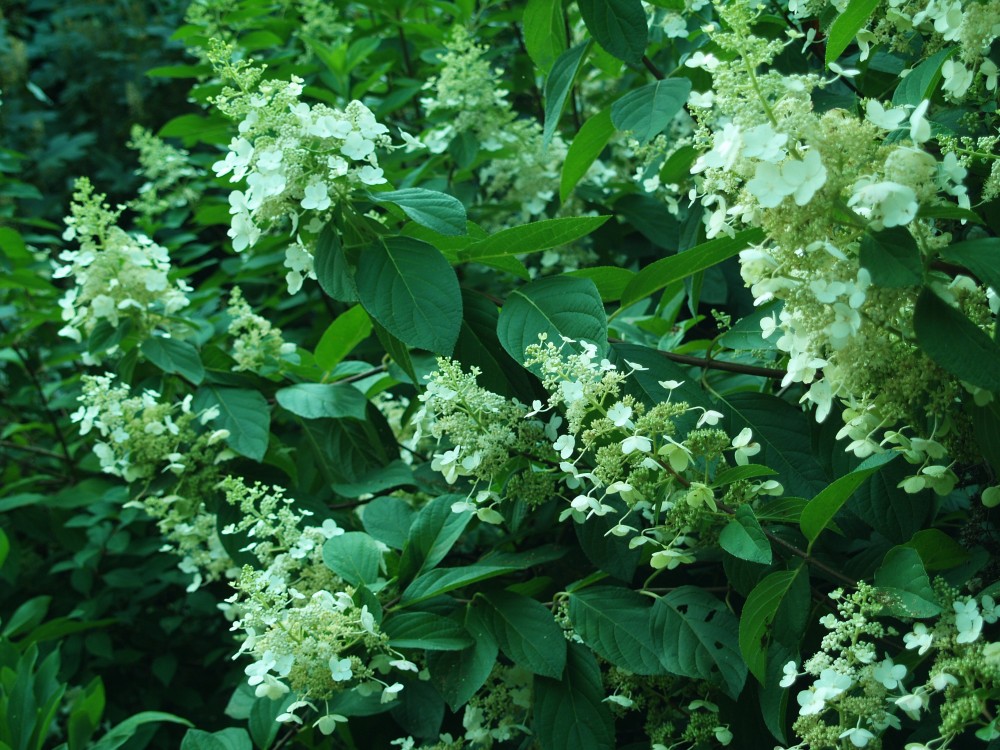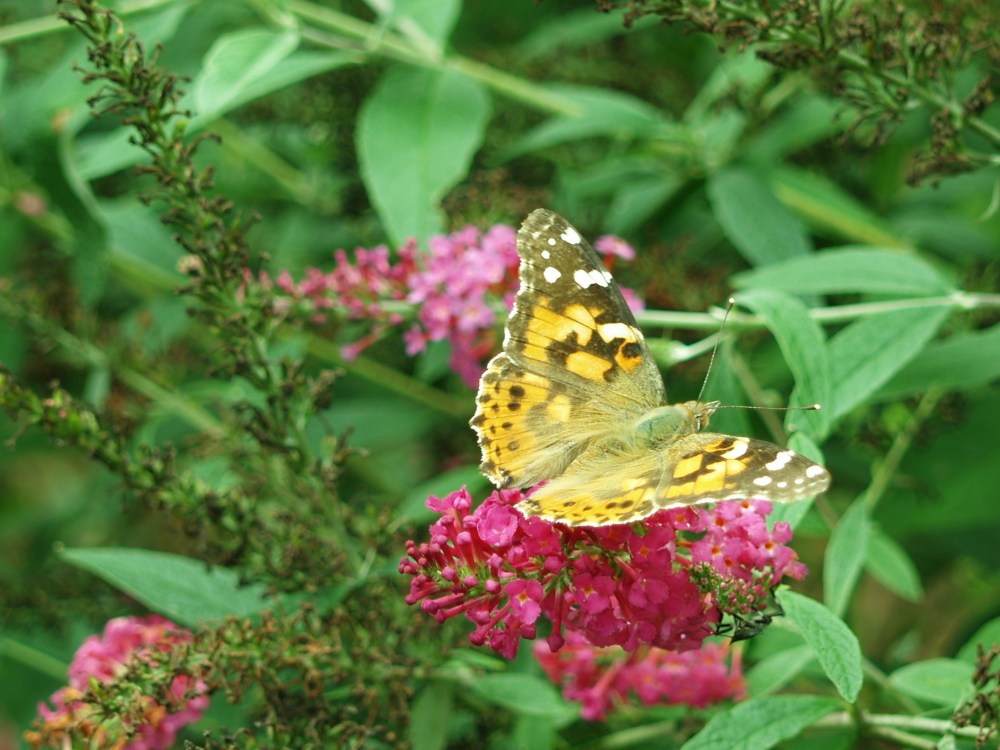A pair of hummingbirds have been particularly active in the garden in recent weeks. Unfortunately, I don’t have the patience to wait to catch a photograph of them, but the likely spot to capture a picture would be when they visit the flowers of ‘Black and Blue’ salvia that borders the garden’s largest pond.
This salvia is noted as only marginally cold hardy for northwestern Virginia, but it has managed to survive for several years in a spot carved out beneath a wide spreading edgeworthia. In fact, I have pruned several branches so that the woody stems of the salvia can find their way through the edgeworthia’s thick foliage. ‘Black and Blue’ flowers through the summer, and the long throated blooms seem perfectly suited to hummingbirds.
The salvia is frequently visited by bumblebees who are sometimes too large to access the flower, so they bite through the bloom’s base to capture its nectar. The hummingbird has no trouble accessing the nectar with its long, narrow bill.
This morning I was feeding the pond’s koi and goldfish when I glanced to see one hummingbird, then another on the large Tardiva hydrangea (above) that borders the pond. The hydrangea’s blooms must be past their peak by now, but I’ve seen hummingbirds darting between flowers on it for several weeks. In a few moments one hummingbird was at the salvia, only a few feet from the pondside chair I was sitting on. It took only a minute for the hummingbird to visit every flower, and then it sped off. A few minutes later a smaller hummingbird visited the salvia before the pair flew out of sight.
I have planted butterfly weeds (Asclepias tuberosa, above) and bushes (Buddleia davidii and hybrids), and various other native and non-native flowers to attract hummingbirds and butterflies, and of course along with these there is an amazing diversity of moths, bees, wasps, and hoverflies. I am fairly competent in identifying plants, but my knowledge of the pollinators that visit the blooms is abysmal, though I’m slowly working on it.
The most common butterflies in the garden are Eastern Tiger Swallowtails, both male (above) and female, but there are numerous moths that are not so distinctive and I’ve not been able to identify. Today I spotted a spotted a Painted Lady butterfly (below) on the ‘Miss Ruby’ butterfly bush, though I could not identify it until I consulted references on the internet.
I’ve lived for quite a few years as a gardener not knowing one butterfly from another, but I’ve begun to see some value (at least to myself) in knowing at least the most basic identification of common butterflies. Not all butterflies are Monarchs, though I assume that at some point in the year there will be Monarchs in the garden, and I hope to have my camera available when they visit. Hummingbirds are a bit too quick for me, but butterflies I can keep up with.
Amazing clarity in these pics!! What camera do you use?
I have an inexpensive Olympus DSLR with a standard lens. I’ve used a close up lens occasionally, but most often I prefer the standard 35mm lens. My biggest problem in taking good close up photos is that I shake too much. When I use a tripod or monopod the shaking is largely eliminated, but I don’t like carrying it around, so I usually take three photos figuring that at least one will be acceptable.
I have a cheaper point and shoot camera with higher resolution than the Olympus that I use when I’m traveling and don’t want to carry the bulkier camera, but the photos never turn as good as they do when I can look through a view finder.
We’re on the same page today–I found this quick and dirty butterfly ID page: http://www.virginia.edu/blandy/clarkecountylandusesurvey/butterflyguide.pdf
How I wish we had more than one hummingbird to spot, but the ruby throats are quite a delight.
I’m researching to be able to identify more than one type of butterfly. Now you tell me there are more types of hummingbirds. This is getting way too complicated, I think I’ll stick with plants. Actually, I know there are more, but I’ve got a tiny little brain and I don’t think I’m capable of learning more than a thing or two in a year.